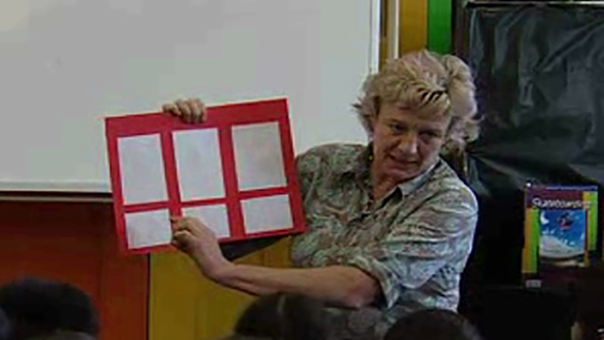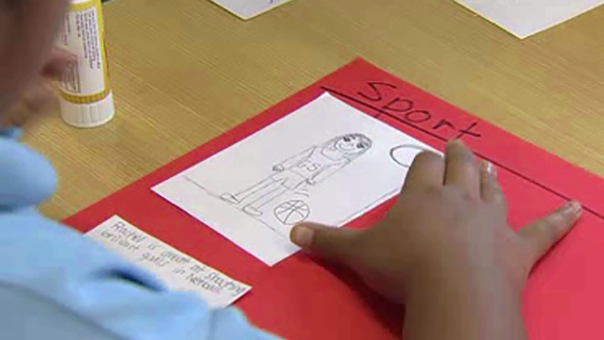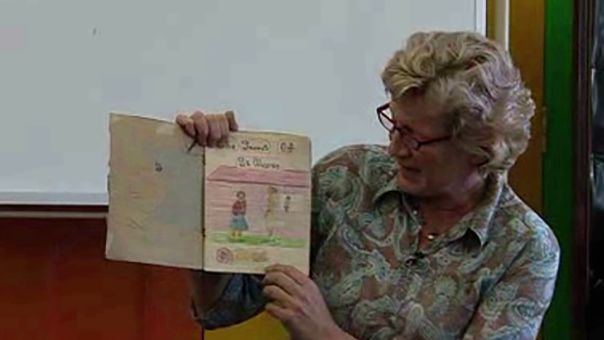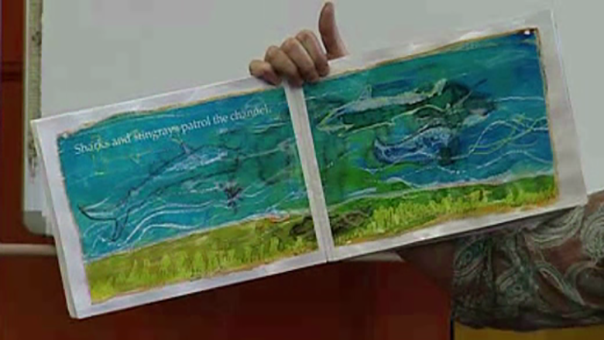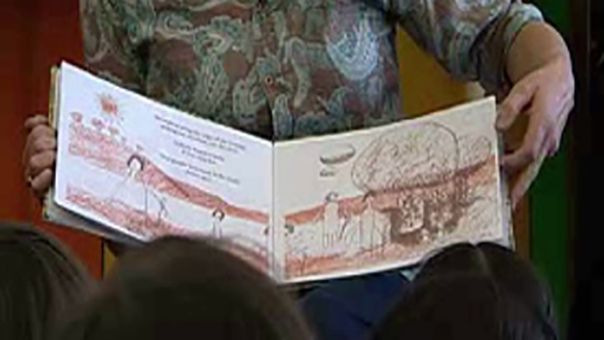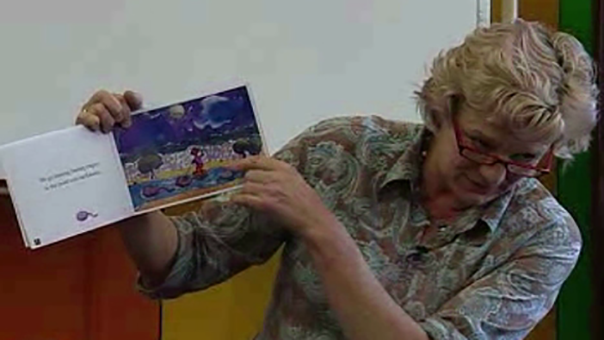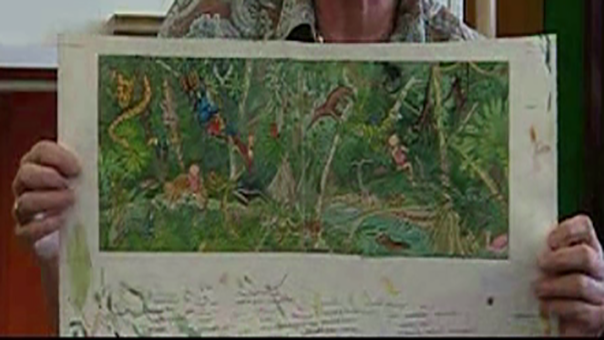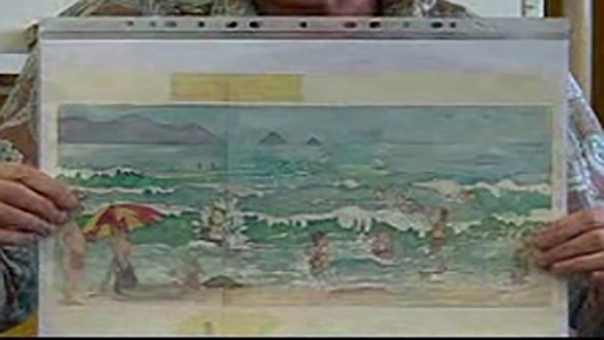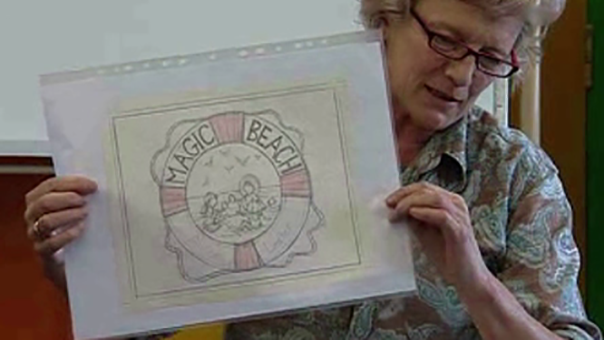4. Creating a class book - Drawing and writing
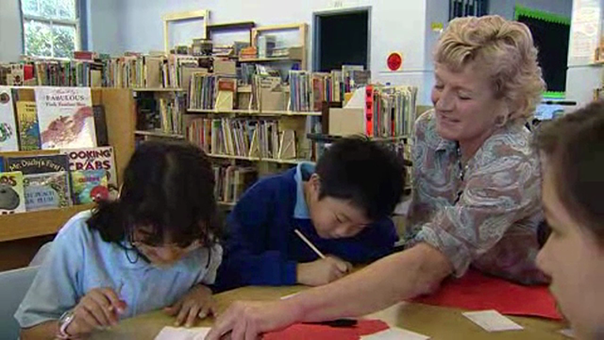
Viewing guide
Teacher to:
-
remind students of the sentences and artwork created during the previous activity if these lessons are being taught separately
-
reinforce the process needed to create interesting sentences using alliteration, adverbs and adjectives.
Students to:
-
recall strategies they used to create interesting sentences.
Students to:
-
identify the ways Alison encouraged the students in the video to improve their sentences
-
discuss whether they used similar strategies to Alison to create great sentences
-
work in their groups to discuss and then combine their sentences into a cohesive collection
-
consider repeated words, rhyme and rhythm or any other changes that can make the collective work more coherent
-
-
create draft drawings for their finalised sentences, thinking about the target audience for their book
-
How does the age of the audience change the artwork?
-
How can the groups make their art works more cohesive?
-
This lesson is designed to help students make their book more cohesive. Depending on the ability level of the class, this video, and associated activities, can be combined with some of the earlier videos so that these steps occur together in one lesson.
Creating coherence
Students may need explicit teaching on coherence and collective decision making in order to work together. The goal is to make their sentences more coherent within the category that their activity falls. Students should be split into groups based on the category that their activity sentence falls into, for example all the students writing about sport would work together to organise the order of their sentences within that category, as well as make changes to ensure that the sentences flow together as a cohesive text.
Artwork
The draft artwork is designed to help students make their artworks fit for purpose, so that they create an image based around the needs of their audience, for example simple images and bright colours for small children. This is also an opportunity to help students think about cohesion in their images, how could they use colour, technique or materials to create cohesion across their category, or even across the whole book?
Learning intention
Completing this activity affords students the opportunity to:
-
compose, edit and present well-structured and coherent texts (EN3-2A)
-
use knowledge of sentence structure, grammar, punctuation and vocabulary to respond to and compose clear and cohesive texts in different media and technologies (EN3-6B)
-
think imaginatively, creatively, interpretively and critically about information and ideas and identify connections between texts when responding to and composing texts (EN3-7C)
-
recognise, reflect on and assess their strengths as a learner (EN3-9E)
-
make artworks for different audiences, assembling materials in a variety of ways (VAS3.2)
-
communicate about the ways in which subject matter is represented in artworks (VAS3.4)
-
optional - Learning across the curriculum: Information and communication technology capability.
Alison Lester: Have you got a sticky-out computer or a newer one?
Child: I have a laptop.
Alison: Oh, okay. Well here you're actually sitting in the chair. Draw, draw. See, you could fit that in that shape, couldn't you?
Child: Hmm mmm.
Alison: How are you going? This says, 'Savannah loves getting people out at dodge ball. Oh, good. Are you going to do a big hurly throw coming in?
Child: Can you rub out?
Alison: Oh, no, that's beautiful. That's gorgeous. Maybe you could do a little bit of the cross-country course in the background. Oh, this is a beautiful drawing. I haven't got my glasses on. 'Bill plays PlayStation while beating his friends at Multiplayer.' That's a gorgeous picture. How are you going to colour it in?
Child: Oh, god.
Alison: You don't have to colour it in if you don't want to, we could leave them black and white. But that's really beautiful lines, it's a gorgeous one. Well done. Don't worry too much about the ruler. It's always better if they're a little bit crooked, the lines, instead of being too straight. Savannah we have to work out what to say. Do you just want to say, 'Savannah loves netball? Savannah is good at netball? Savannah is a speedy netball player?
Child: Speedy.
Alison: Alright Savannah, because that sounds nice for Savannah to ... is a speedy ...
Child: I was just trying to make an 's' on something ...
Alison: Yeah. Savannah is a speedy centre. Even though it's a 'c' it sounds like 's' doesn't it? Yeah?
Child: Yeah.
Alison: Is that good? Okay, you write that and do your netball picture. Keep going with your tennis picture, that's good. 'Tahlia smashes a backhand to her opponent on the head.' Oh, someone's ... Oh, this is a nice picture. Are you going to do your words? That's lovely. A nice big tub of KFC with just one little bit left. Okay, put it like this, what's your name?
Child: Sala.
Alison: So, you write that first and then the finish of the sentence. And you could just write, 'Sala eats KFC.' But you could think of something a bit more interesting, like, is there a special time you like it? Do you like it on Sunday night? Or do you like it for lunch?
Child: Lunch.
Alison: Okay, 'Sala loves KFC for lunch.'
Child: Sala.
Alison: Sala, yep. Can play skipping. She beats everyone in double-dutch. She is always the best one skipping. Good girl. Can I see? And you would've loved to have ... Oh, that's a beautiful picture of skipping.


